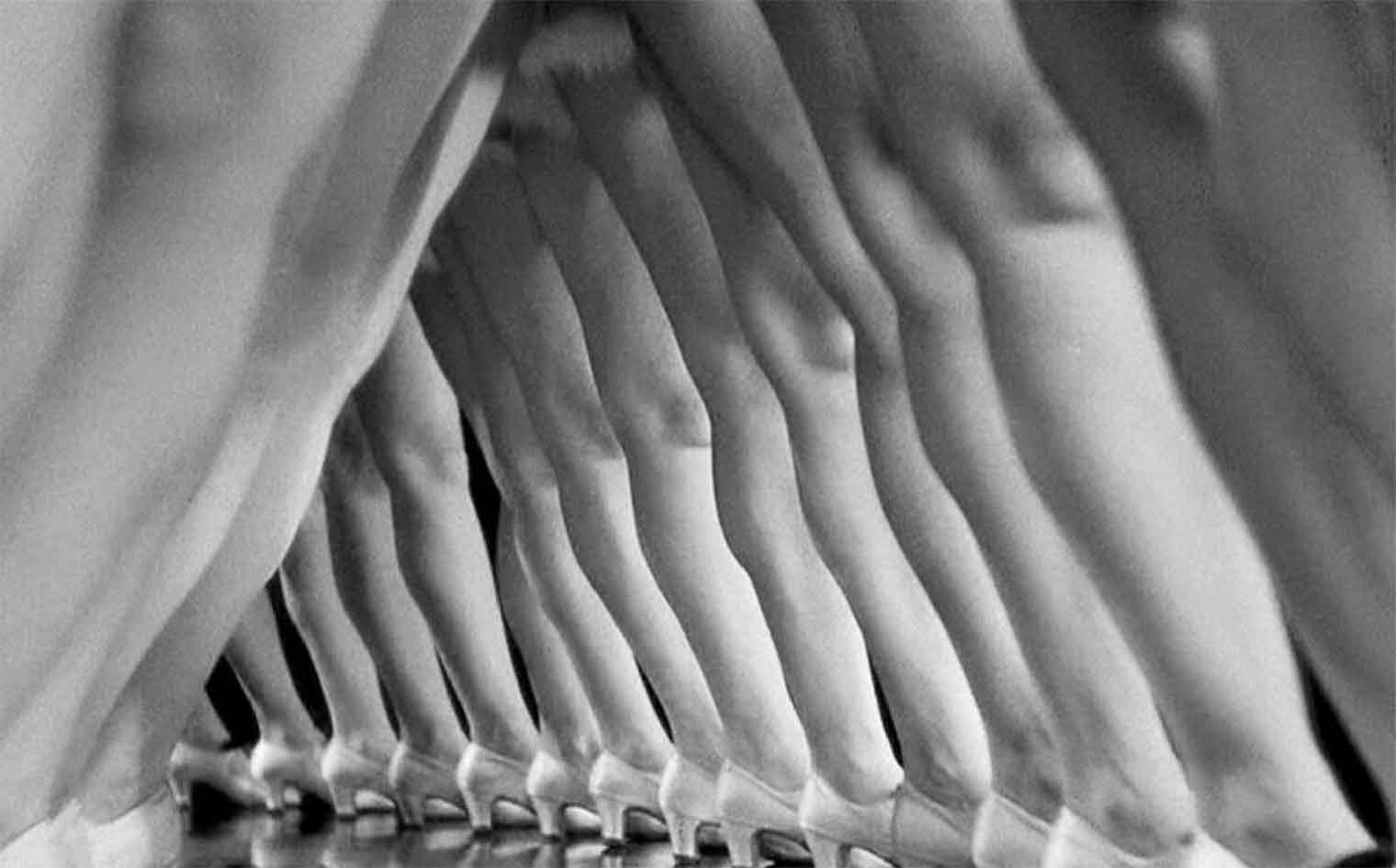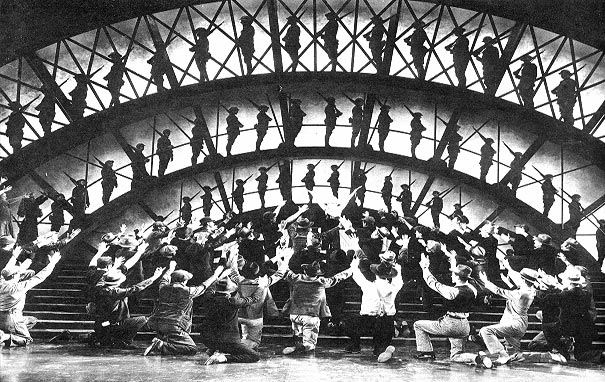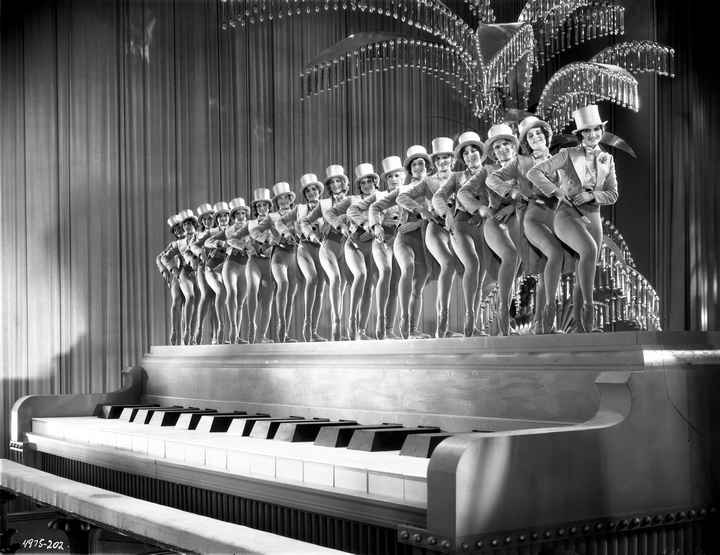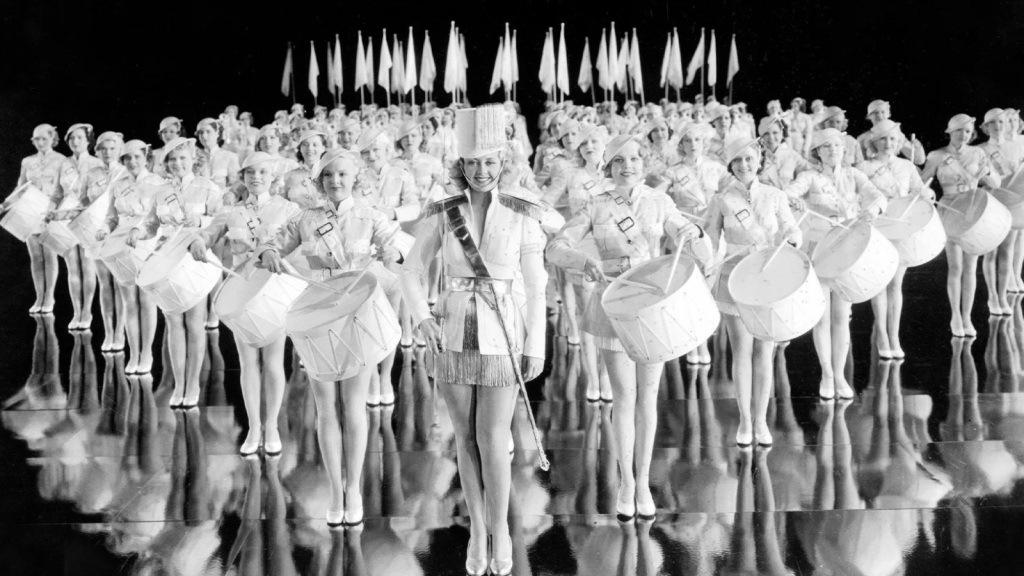Busby Berkeley was an American film director and choreographer best known for his innovative and lavish musical production numbers in Hollywood musicals during the 1930s and 1940s. His choreographed sequences often featured intricate geometric patterns, vast arrays of dancers, and grand visual spectacles, setting the bar for what the movie-going audience came to expect from musical cinema.
Busby Berkeley could transform the cinematic space into a grand stage for elaborate musical numbers. Often detached from the narrative’s reality, these sequences created a dreamlike atmosphere where reality yielded to fantasy. For instance, in Footlight Parade, he used a water ballet in a sequence where synchronized swimmers create cascading waterfalls and kaleidoscopic patterns. Berkeley’s love for overhead shots was evident in many of his films, with Gold Diggers of 1935 showcasing dancers forming dynamic patterns and shapes, providing a visual treat for audiences.
Furthermore, Berkeley’s approach to filmmaking was revolutionary for its time, focusing less on the individual stars and more on the collective visual experience. His sequences had a transformative quality, turning dancers into components of a larger, cohesive whole. This can be seen in 42nd Street, where he used a multitude of performers to create living set pieces, moving away from the conventional close-ups of the stars. In essence, his films were less about the story or the individual characters but rather about the visual spectacle and the collective magic of performance.

Busby Berkeley (1895 – 1976)
Calculated Films
- Gold Diggers of 1933 (1933)
- The Gang’s All Here (1943)
Similar Filmmakers
- Archie Mayo
- Charles Walters
- David Butler
- Gene Kelly
- George Cukor
- George Sidney
- Herbert Ross
- Lloyd Bacon
- Mervyn LeRoy
- Michael Kidd
- Mitchell Leisen
- Ray Enright
- Robert Wise
- Rouben Mamoulian
- Roy Del Ruth
- Stanley Donen
- Vincente Minnelli
- Walter Lang

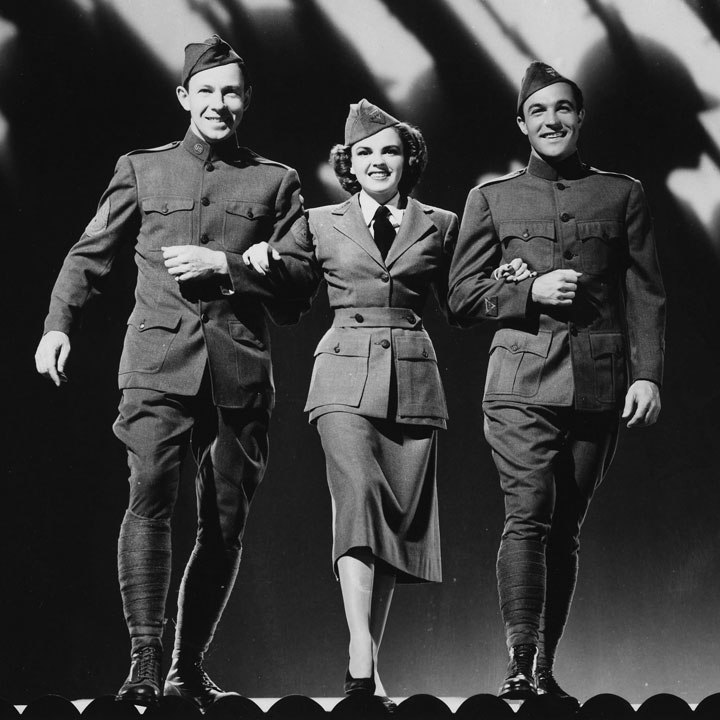
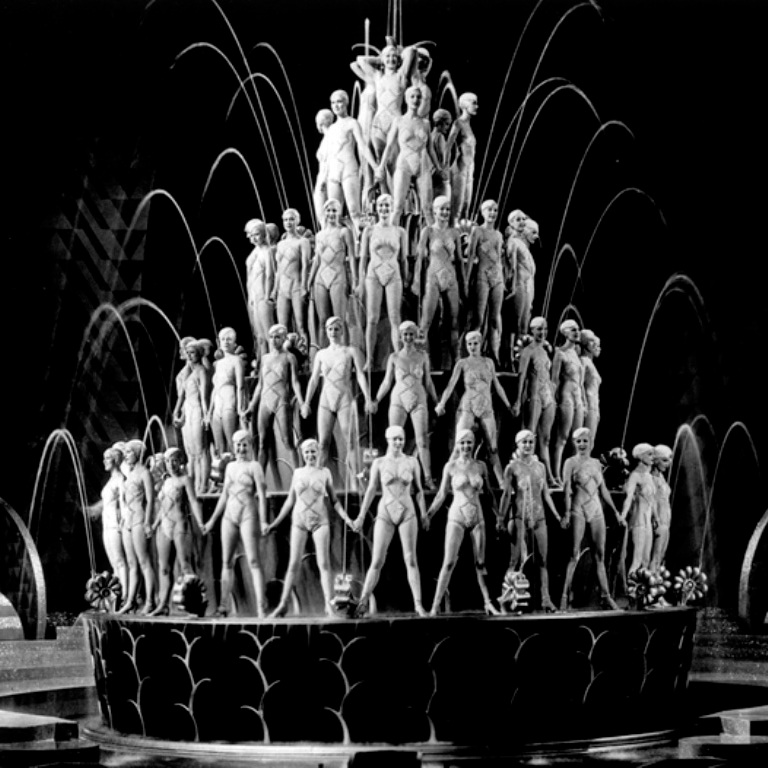
Busby Berkeley’s Top 5 Films Ranked
1. Gold Diggers of 1933 (1933)
Genre: Comedy, Musical
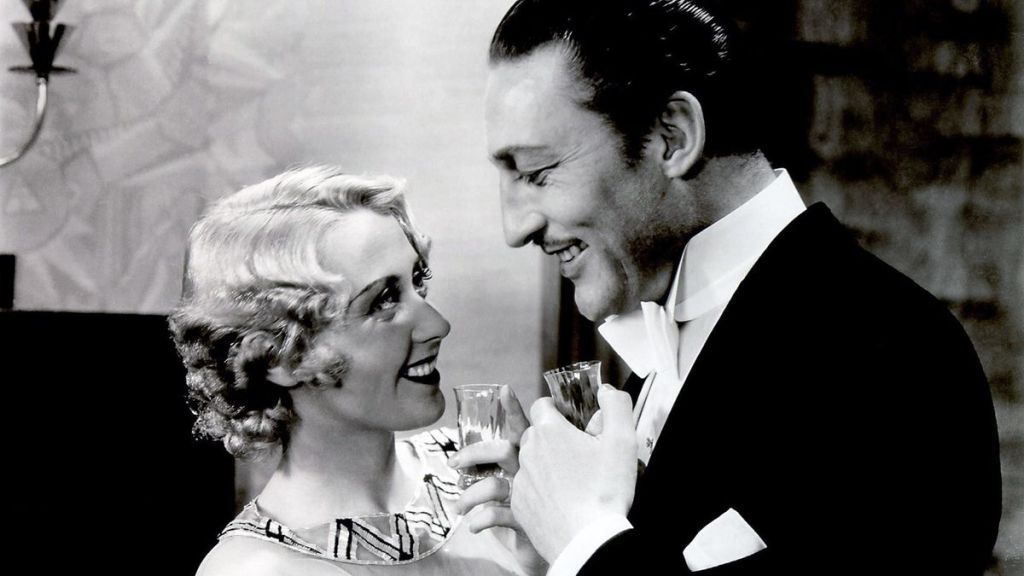
2. Footlight Parade (1933)
Genre: Musical, Comedy
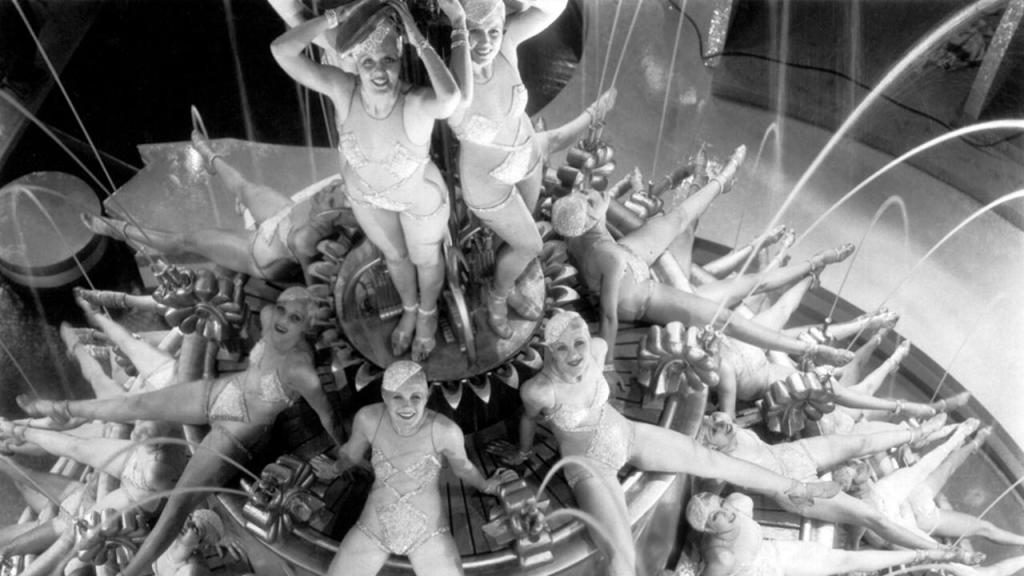
3. For Me and My Gal (1942)
Genre: Musical, Romance
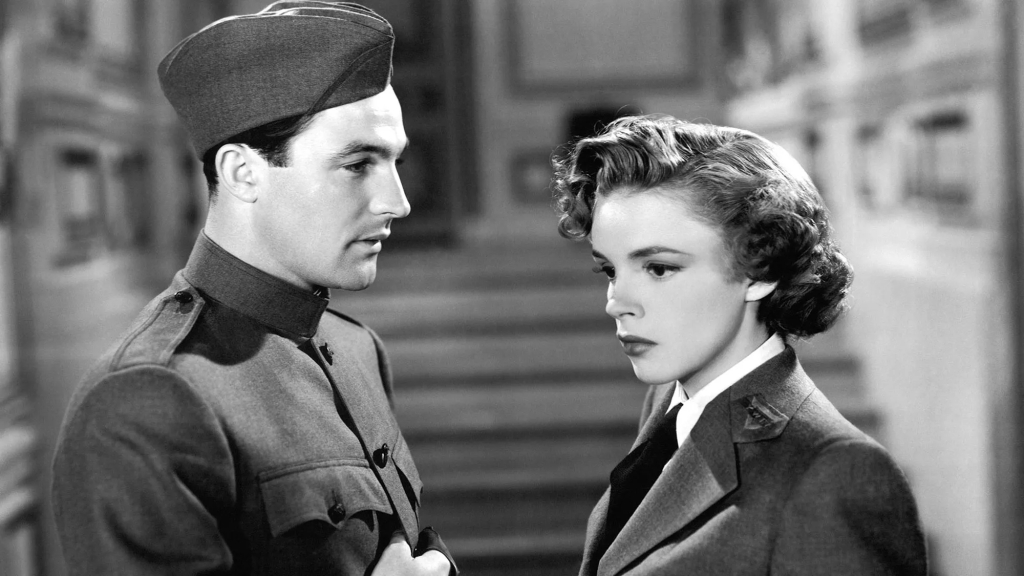
4. Gold Diggers of 1935 (1935)
Genre: Musical, Comedy

5. Dames (1934)
Genre: Musical, Comedy, Romance, Satire

Busby Berkeley: Themes and Style
Themes:
- Escapism: Berkeley’s films often provided an escape from the harsh realities of the Depression. They were lavish, extravagant, and glamorous, transporting audiences to a world of opulence and beauty.
- Glamour and Showbiz: Many of his films revolved around the world of showbiz, offering a behind-the-scenes look at the life of performers.
- The Power of the Collective: Berkeley frequently showcased large groups of dancers working in unison. This presented a sense of unity and collective strength.
Styles:
- Geometric Patterns: One of Berkeley’s most iconic styles was arranging dancers in complex, often symmetrical, geometric patterns. This was best viewed from overhead shots where dancers would form shapes like circles, lines, or even animated patterns.
- Top-down Views: A signature Berkeley shot, these aerial perspectives transformed human figures into abstract, kaleidoscopic visuals.
- Kaleidoscope Imagery: Using mirrors, camera tricks, and coordinated movement, Berkeley would create mesmerizing kaleidoscope-like images with his performers.
- Technological Integration: He was known for incorporating elements like rotating platforms, oversized props, or swimming pools to enhance a sequence’s visual appeal and complexity.
- Narrative Detachment: Often, a Busby Berkeley number might not have a direct connection to the film’s main plot. It was a spectacle meant to stand on its own.
Directorial Signature:
- Scale: Berkeley’s musical numbers were characterized by their grand scale. Hundreds of dancers might be involved in a single sequence, and the set pieces were often massive and intricate.
- Spectacle Over Story: While his sequences were visually breathtaking, they were often not deeply integrated into the film’s narrative. They were moments of sheer visual wonder.
- Integration of Cinema and Dance: Instead of simply filming a stage performance, Berkeley used cinematic techniques – from crane shots to close-ups – to elevate dance to a new level of storytelling.
- Repetition with Variation: While his sequences often involved repeating patterns, a variation or build-up always kept the viewer engaged. This could be a change in formation, a new prop, or a shift in camera angle.
- Abstract Human Form: Berkeley often transformed the human body into an abstract form. Through overhead shots and meticulous choreography, individual performers became parts of a greater visual spectacle.
Busby Berkeley – Great Director
